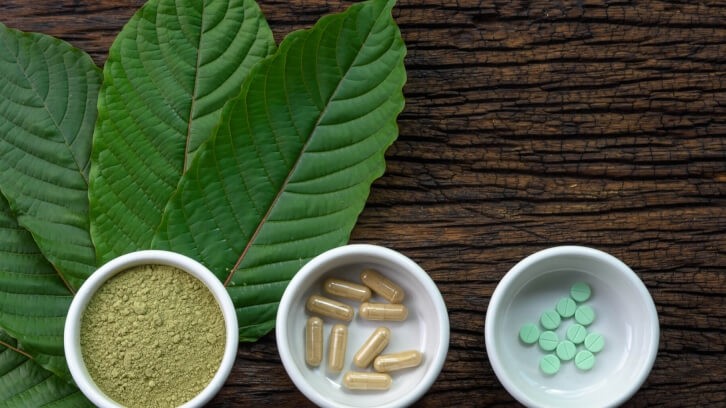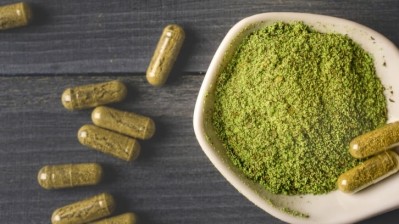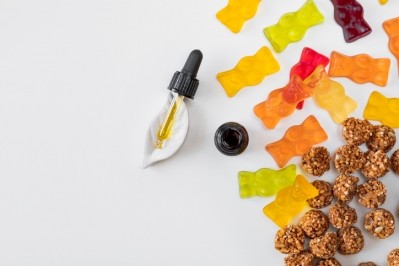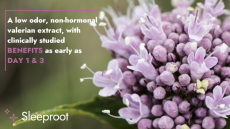Experts call for increased regulation to combat synthetic 'kratom'

The Global Kratom Coalition said it is important for states to regulate synthetic 'kratom' products because of public health implications from the enhanced kratom alkaloids, or their synthetically-derived analogues. In particular, the coalition is focused on products containing the primary synthetic isolated metabolite 7-hydroxymitragynine (7OH), which is more potent than morphine. These products are marketed as a derivative of kratom, an herbal substance that in typical circumstances causes some stimulant and sedative effects.
“Not all kratom is created equal, and not all kratom is actually kratom,” said Matthew Lowe, executive director of the coalition. “There's been very limited science that's been done on these isolated [synthetic] products.
He added that the Global Kratom Coalition is opposed to the integration of 7OH synthetics into the existing kratom product supply chain.
The few scientists who are researching kratom are also among those calling for increased legislation. In an open letter penned last month by scientists at the University of Florida and Johns Hopkins University, the researchers said that it is incumbent upon the Food and Drug Administration (FDA) to ensure that consumers have access to kratom products that are properly labeled to separate kratom from its adulterated synthetic derivatives.
“Legislatures should require adequate labeling of kratom products according to the FDA and the U.S. Federal Trade Commission (FTC) [guidelines] for dietary supplements,” they wrote. “Sales of kratom products should be limited to consumers 18 years and older. The amount of mitragynine, 7-hydroxymitragynine and total alkaloids per serving should be included on the label as well as a statement that the product contains no semi-synthetic kratom-derived alkaloids.”
In response to a request for comment, FDA shared a link to its FDA and Kratom page with information on the Agency's actions on kratom, including supporting research to address safety issues and possible therapeutic uses as a drug. It also noted that kratom is a plant, whereas 7-hydroxymitragynine is a compound found in some kratom products (in varying amounts).
"The FDA makes regulatory decisions based on available science," a FDA spokesperson told NutraIngredients-USA. "The agency continues to evaluate the available safety information about the effects of kratom and associated compounds, including the alkaloid compounds mitragynine and 7-hydroxymitragynine. We continue to encourage health care professionals and consumers to report any adverse reactions to the FDA’s MedWatch program."
Kratom vs. synthetic kratom
Kratom is an herbal leaf from a tropical evergreen tree native to Southeast Asia and has been consumed for centuries. The Global Kratom Coalition said in a statement that kratom has a long, safe history of use and has been the subject of significant scientific research and while defined as a New Dietary Ingredient (NDI) by the FDA, there is a strong case that shows leaf kratom is, in fact, an Old Dietary Ingredient (ODI).
Lowe said he suspects leaf kratom use in the United States can be traced prior to 1994.
The FDA takes a different view, however, stating that the Agency has concluded that kratom is a NDI for which there is inadequate information to support its safety. FDA has rejected at least six New Dietary Ingredient Notifications for the botanical.
Kratom can produce opioid-like effects when ingested. The National Institute on Drug Abuse, which conducts research to evaluate the potential medicinal uses for kratom, says people report using the substance to manage pain, fatigue, mental health problems, cravings and to combat drug withdrawal symptoms.
According to the organization, “rare but serious effects have been reported in people who use kratom, including psychiatric, cardiovascular, gastrointestinal and respiratory problems. Compared to deaths from other drugs, a very small number of deaths have been linked to kratom products, and nearly all cases involved other drugs or contaminants.”
7OH is a metabolite that only becomes apparent upon degradation of the kratom leaf, Lowe said. When it comes to the creation of 7OH, manufacturers capitalize on that degradation process and its relationship to opioid receptors.
“They understand its power,” he added. “[Manufacturers] understand 7OH’s high affinity to the opioid receptors. And they figured out a way to synthesize 7OH and turn it into an isolated product that has levels of 7OH that are in orders of magnitude higher than what would be found in any proper, real kratom product. And these are being sold on the market freely and openly as kratom.”
State regulation
Some states are addressing the wild, wild, west of the kratom industry, as Lowe describes it, to stymie adulteration and enact other consumer protections. Currently, kratom is banned in six states—Alabama, Arkansas, Indiana, Rhode Island, Vermont and Wisconsin—although a recent report from the Congressional Research Service indicated that four of these states may move to permit the sale of kratom products. Lowe said that 12 states have kratom consumer protection acts, and Maryland will become the thirteenth if Governor Wes Moore signs similar legislation.
Although not yet regulated in California, legislators have proposed a kratom consumer protection act, Assembly Bill 2365, to require kratom products to be registered with the state’s public health department. The department would regulate the chemical composition of kratom, require the labeling of alkaloid amounts and mandate warning labels. Also, people under the age of 21 would not be able to purchase kratom-based products. Products cannot include more than 1% 7OH.














